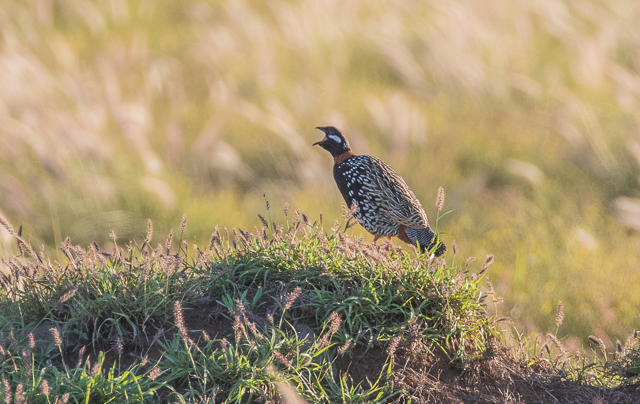Jake Mohlmann reports from Hawaii
We just wrapped up an 8-day adventure in the North Pacific on the spring WINGS Hawaii tour. The species count was impressive, with 85 species encountered on the three islands we explored. Each island held its own surprises, from seabirds to those utilizing the native forests.
We were never far from crashing waves and scenic beaches.
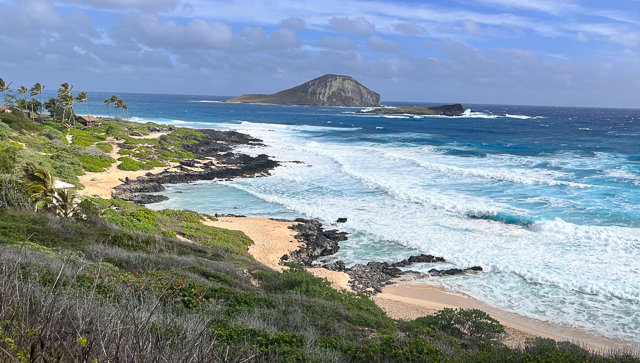
The state of Hawaii is comprised of well over 100 islands, islets, and atolls so perhaps it’s no surprise that seabirds abound on the coastlines. We had a booby sweep with fantastic looks at Brown, Masked, and Red-footed sometimes close enough to touch.
This Red-footed Booby waits near its nest.
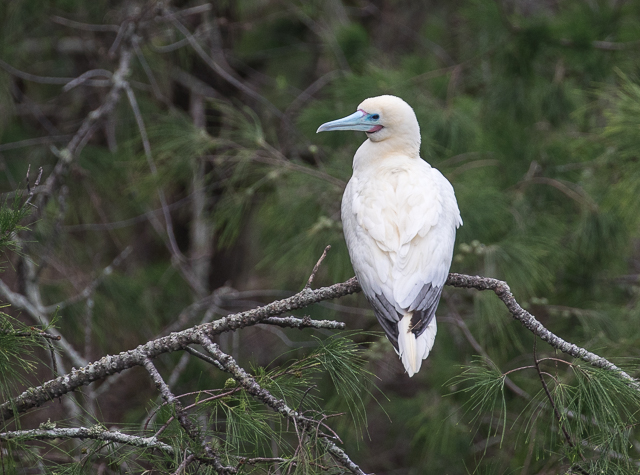
Tropicbirds were also well-represented on multiple islands. We ate lunch next to a breeding colony of Red-tailed Tropicbirds that were performing aerial flight displays with one another, flying backwards in the wind in big loops like a feathered wheel spinning through the sky. It was also memorable to watch White-tailed Tropicbirds fly through the vast expanse of Waimea Canyon with red striated rocks and gushing waterfalls in the background.
Red-tailed Tropicbird during lunch at eye level.
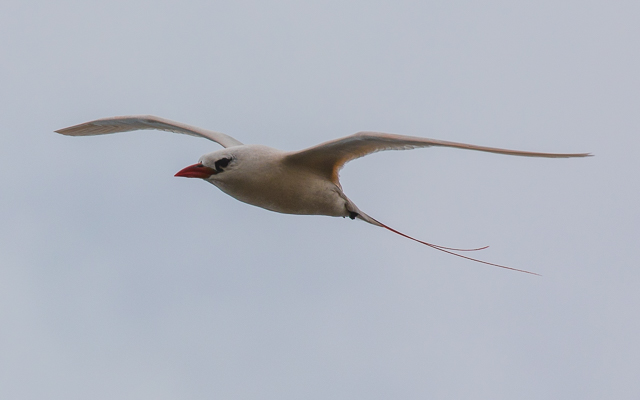
Waimea Canyon’s stunning beauty was apparent.
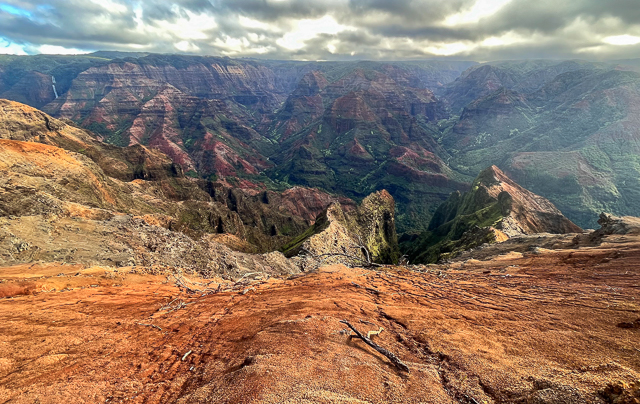
Hawaii is world famous for its breeding colonies of Albatross, including Laysan, Black-footed and even at least one Short-tailed. We were a bit early for the masses, but just in time to see a very young Laysan Albatross sitting perfectly still under the watchful eye of its parent.
The tour’s “cute” award went to this baby Laysan Albatross
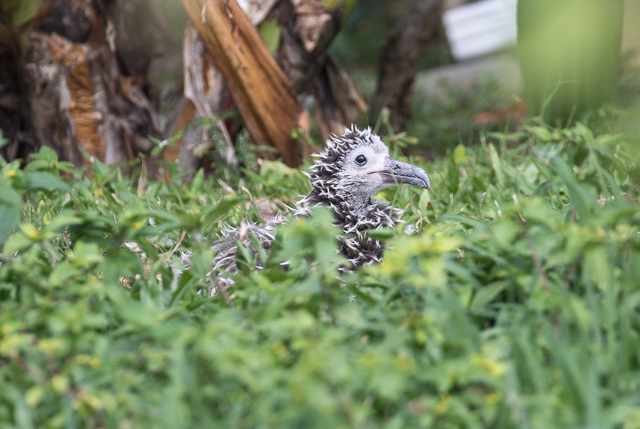
This adult Laysan Albatross kept watch over its chick.
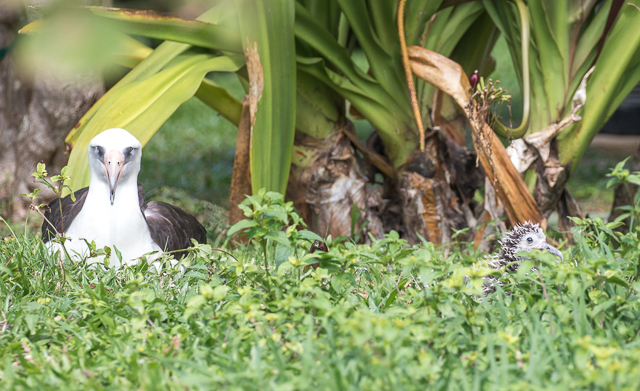
The forest birds in Hawaii are facing extreme challenges every day, from loss of habitat to introduced avian malaria. We focused on each islands endemic species and were able to cross paths with nearly all of them. The group’s favorite place for finding them was hands down in Hakalau Forest National Wildlife Refuge. This refuge protects one of the last remaining stands of montane forest on the big island, and not a place many people get to visit. Soon after exiting our vehicle a begging call brought our attention to an adult Akiapolaau trying to feed its young in the pouring rain. This species is extremely rare and an oddity for its extremely long-decurved upper mandible used for picking tiny insects out of precarious spots. The Hawaiian Creeper did just that, acting like a nuthatch looking over every inch of the tree trunks in search of morsels. Although it exists on multiple islands, we had our best look at the Iiwi, a bright orange flame so spectacular it graces the cover of the bird guide for Hawaii.
The ‘Aki’s’ unique bill was utilized repeatedly for our group.
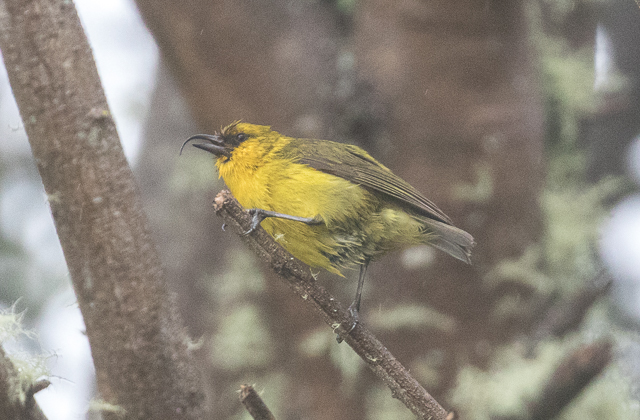
The Hawaiian Creeper very reminiscent of a nuthatch.
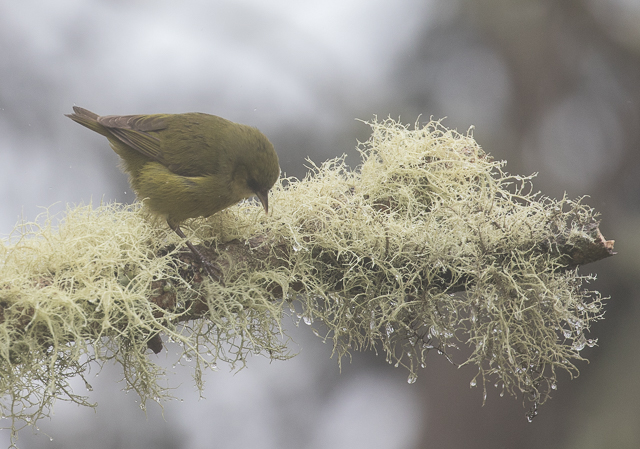
This Iiwi fed on blossoms at eye level.
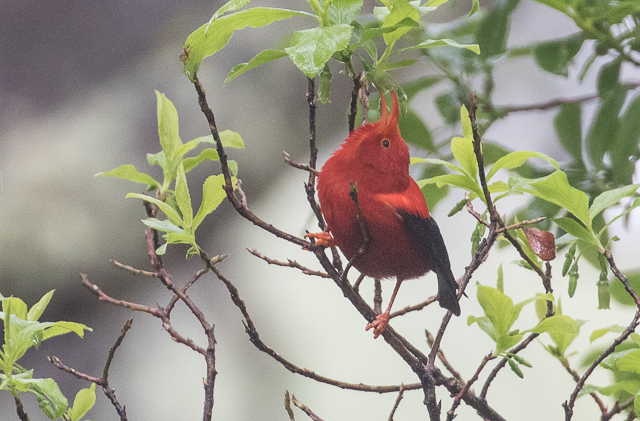
If you’re a fan of raptors you will definitely need to go to Hawaii. There’s exactly one species, the Hawaiian Hawk, endemic to the Big Island. We saw a pair directly overhead slowly swirling in an updraft over the gently rolling hills.
Hawaiian Hawk is the only raptor we saw, but a good one!
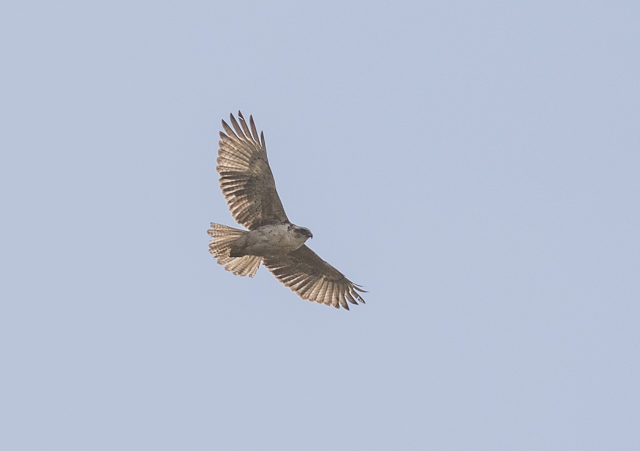
The majority of bird species in Hawaii are introduced birds that have been brought over the last century for various reasons including pest control and simply because they are beautiful. Some of the highlights experienced were multiple species of Munias traveling around in flocks, with Chestnut being our favorite. There aren’t many places one can see three species of cardinal in one trip, but Hawaii is certainly one of them. It was a toss-up between Red Crested and Yellow-billed as to which one took the gold medal for looks. Gamebirds also abound and at any moment a Red Junglefowl or Erckel’s Spurfowl could cross right across the road in front of the van. Our favorite was the male Black Francolin, who we heard several times before finally getting an amazing look of one calling from the top of a mound.
The Chestnut Munias fed in roving flocks.
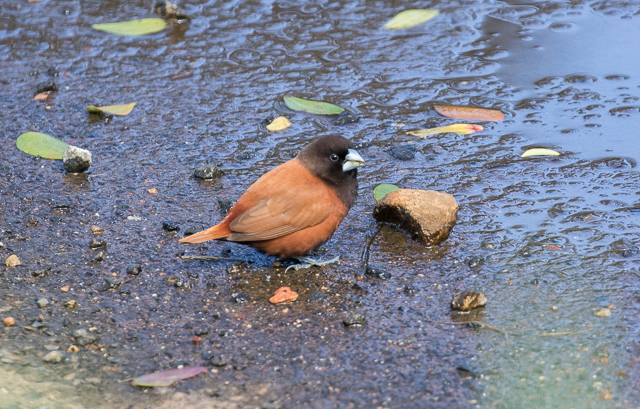
Yellow-billed Cardinal perched up nicely.
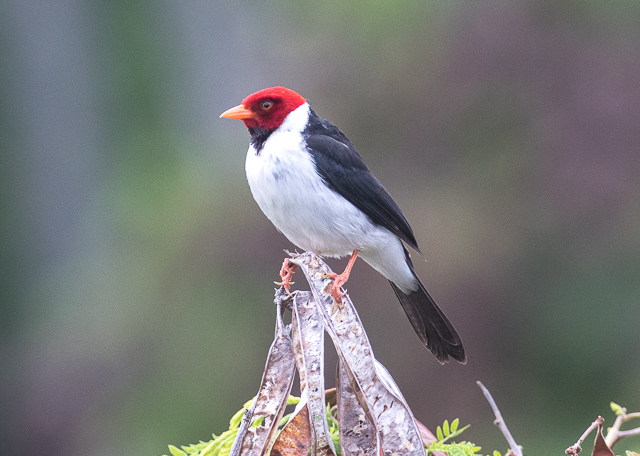
This male Black Francolin called loudly one morning.
